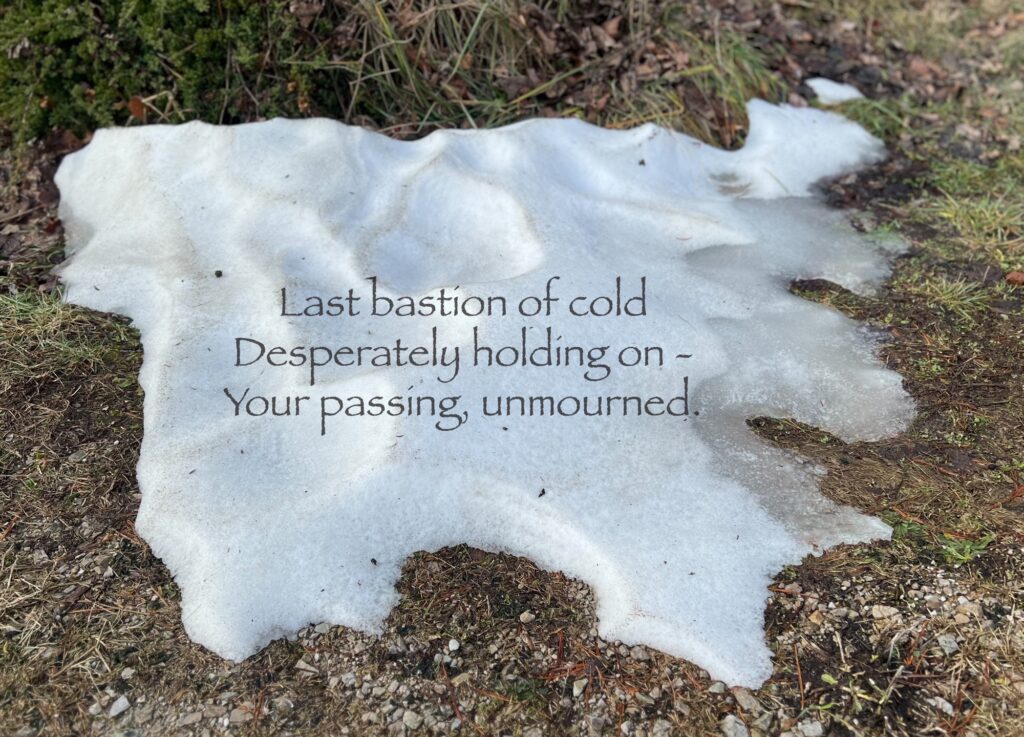
Unless you’ve been living underground, you’re probably aware of the disastrous consequences the holiday storm wreaked (yes, wreaked, not wrecked!) on many areas of the country. People have died because of the bitterly cold temperatures, though there are stories of everyday heroism worth celebrating (juxtaposed with stories of shocking callousness). While small farmers may not make the news, I’m sure that many animals – including wild animals – also lost their lives or suffered injury during the brutal cold because this was a cold that had to be experienced to be believed.
The forecasted storm dumped several inches of snow on us overnight. We went from mild temperatures in the upper 40s and rain to blizzard conditions in just a few hours. It snowed heavily for at least 4 hours, and temperatures plunged. On Christmas Eve Eve, we woke up on the Ice Planet Hoth.
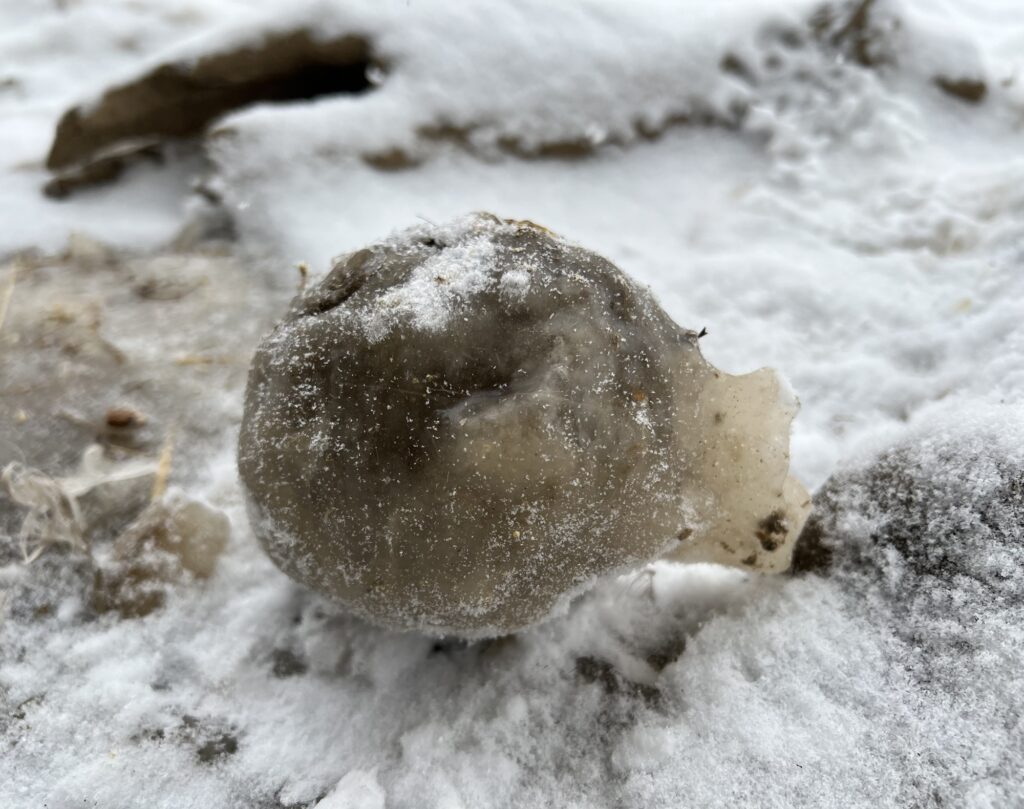
Though forecasts now seem best viewed with some skepticism (and balanced by a farmer’s understanding of the signs of coming weather), we prepared for the cold by bringing grow-outs inside and putting extra insulating material in the hoops on pasture last night. The brutally cold wind gusts, however, blew the powdery snow into every nook and cranny, through the tiny vents in the chicken coop, and into tractors. It created drifts of deceptive depth, inviting unwary travelers to plunge in.
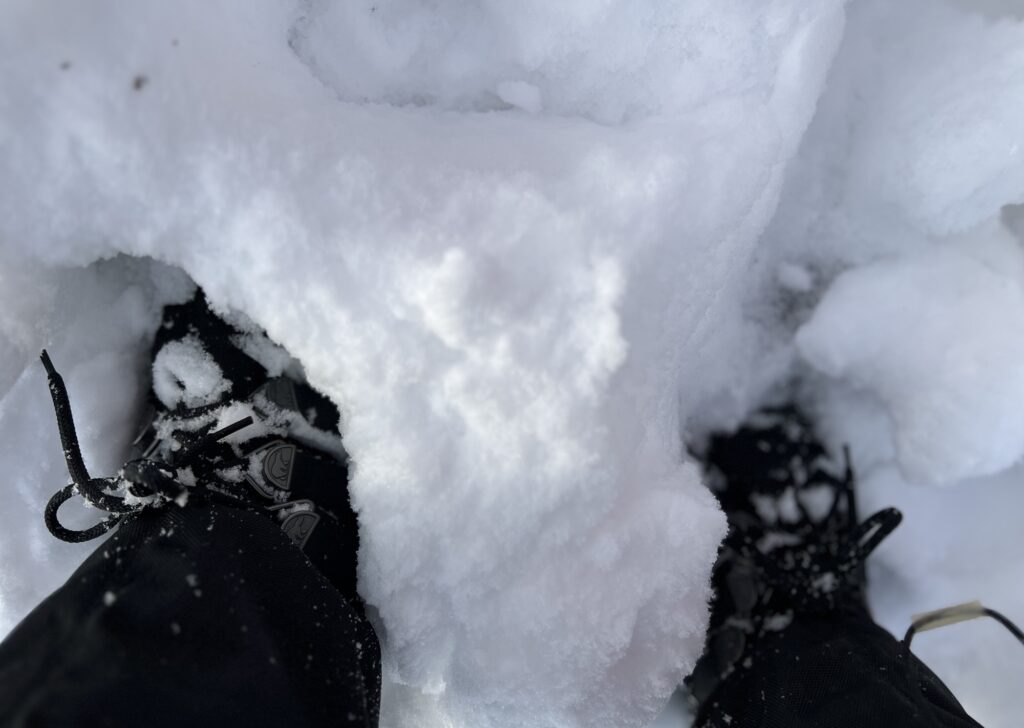
Roosters with large combs often experience some frostbite during the winter, even if they have cozy coops to shelter in, because they tend to stand guard outside where hens may be, exposing those combs to the cold. Damage has usually meant a few comb tips eventually slough off, leaving the rooster none the worse for wear. Unfortunately, the brutal cold meant that combs and wattles froze. Temperatures were slow to climb over the next couple of days, which didn’t help matters. We’re monitoring the boys who have frostbite for signs of complications, but expect that all affected birds will ultimately end up with smaller combs and wattles.
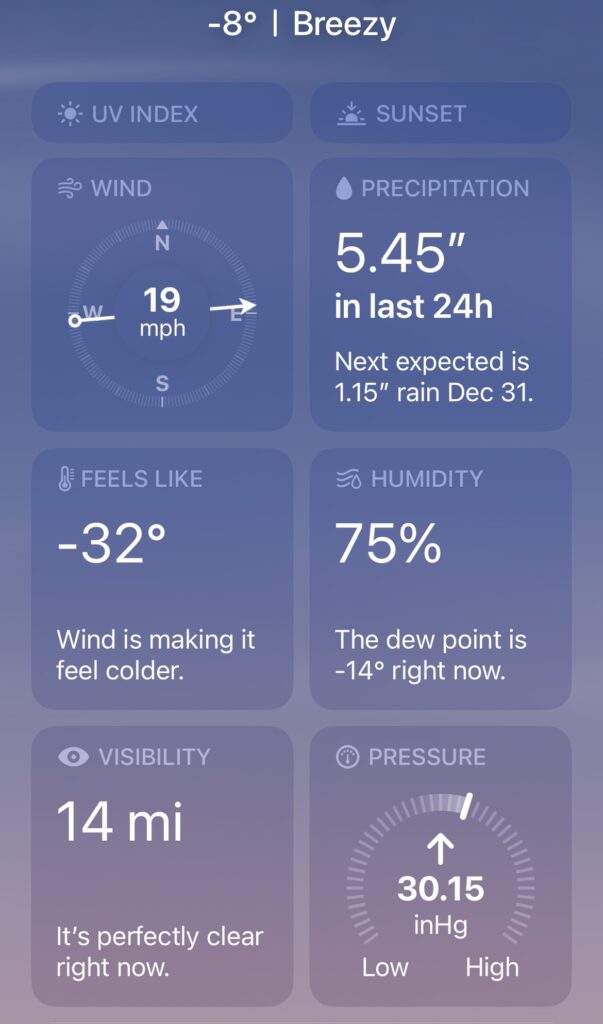
Despite the frostbite issues, our poultry living outside fared well. We confined the main flock of layers in their coop on the coldest days because we knew that some of them would go out despite the dangerous cold and risk injury. They were more than ready for freedom when the weather warmed up a bit, but the flock rooster insisted on standing outside in the wind chill and managed to get frostbite on his comb, too. He may be pretty, but he’s not the sharpest tool in the shed.
The geese, hardy creatures that they are, were unperturbed by the cold. They’re also quite adaptable, and adjusted to eating dry chick feed and grains instead of their soaked grain because…well, the photo speaks for itself.

Horrifyingly, little wild birds were dropping dead on the coldest day. Some appeared to have taken shelter in the (unheated) old barn, and just fallen from their perches onto the ground. Sadly, one little bird even had a piece of hay in his beak, as though he had been about to do something before he succumbed to the cold.
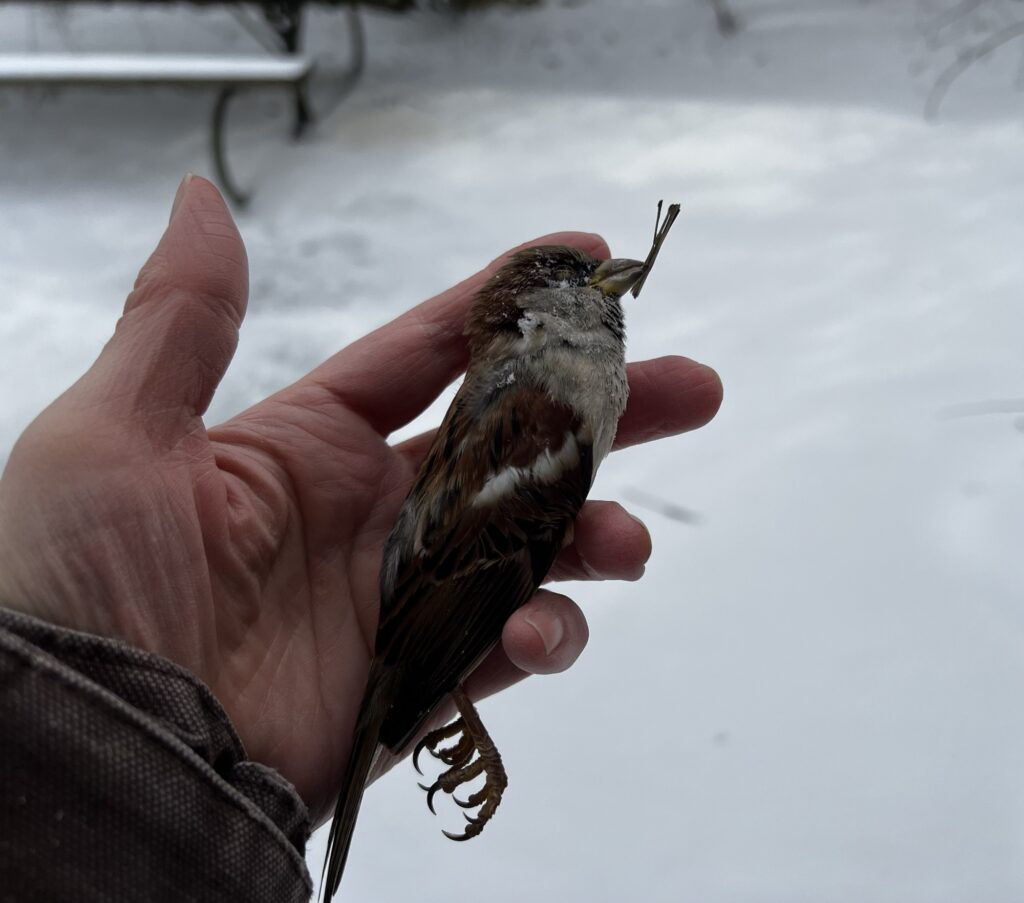
The birds tried to warm up by hanging around the doors where some heat must have been escaping, but it just wasn’t enough to sustain many of them. One died hanging onto a bush, grasping the branch even in death, like a frozen trapeze artist.
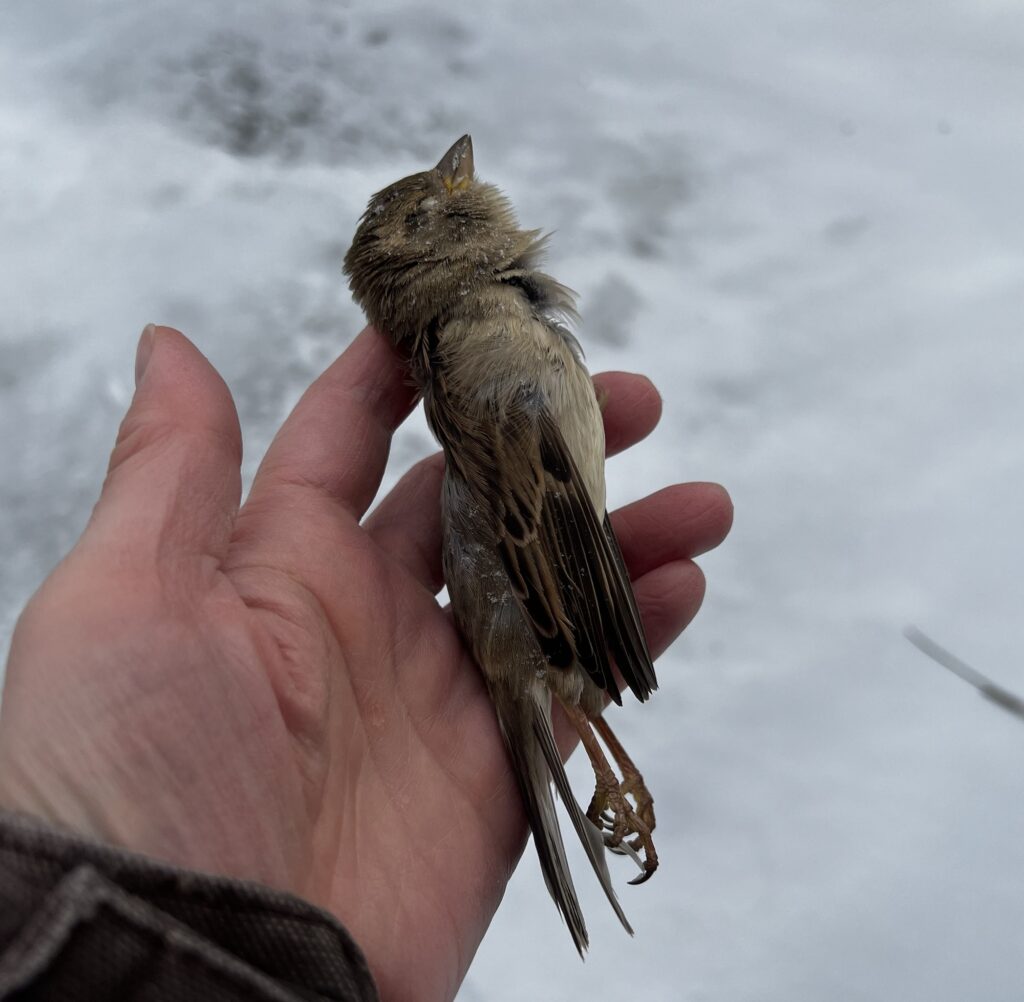
In total, we found 12 dead birds in the barn and around the house.
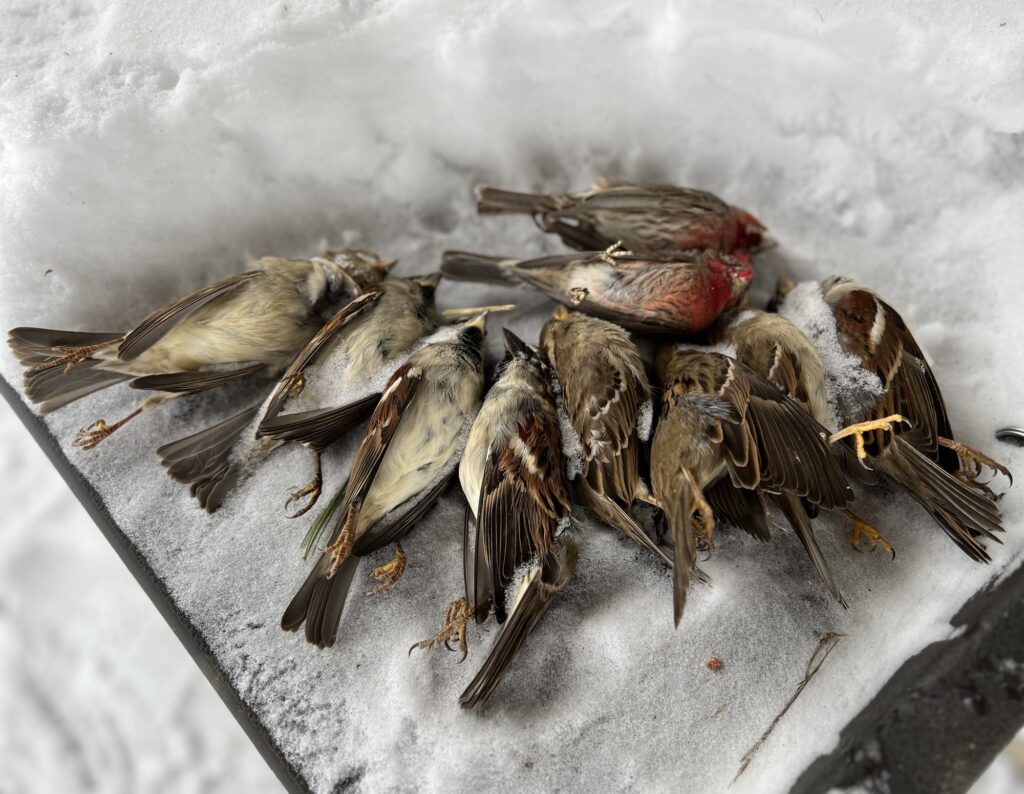
Lest you should think we were simply observers who let nature take its course, we chose to fight in this pitched battle: we put out warm drinking water (multiple times a day, since it would ice up so quickly) and lots of bird food, including suet, for the birds during those cold days. We feed the birds throughout the year, but they really went through a remarkable amount of food during the bitter cold. We were happy to feed them as much as they could consume in the hope that it might be enough to sustain them until the weather warmed up and they were no longer at risk. As soon as it began to warm up, they looked so much happier and returned to their active, foraging selves.
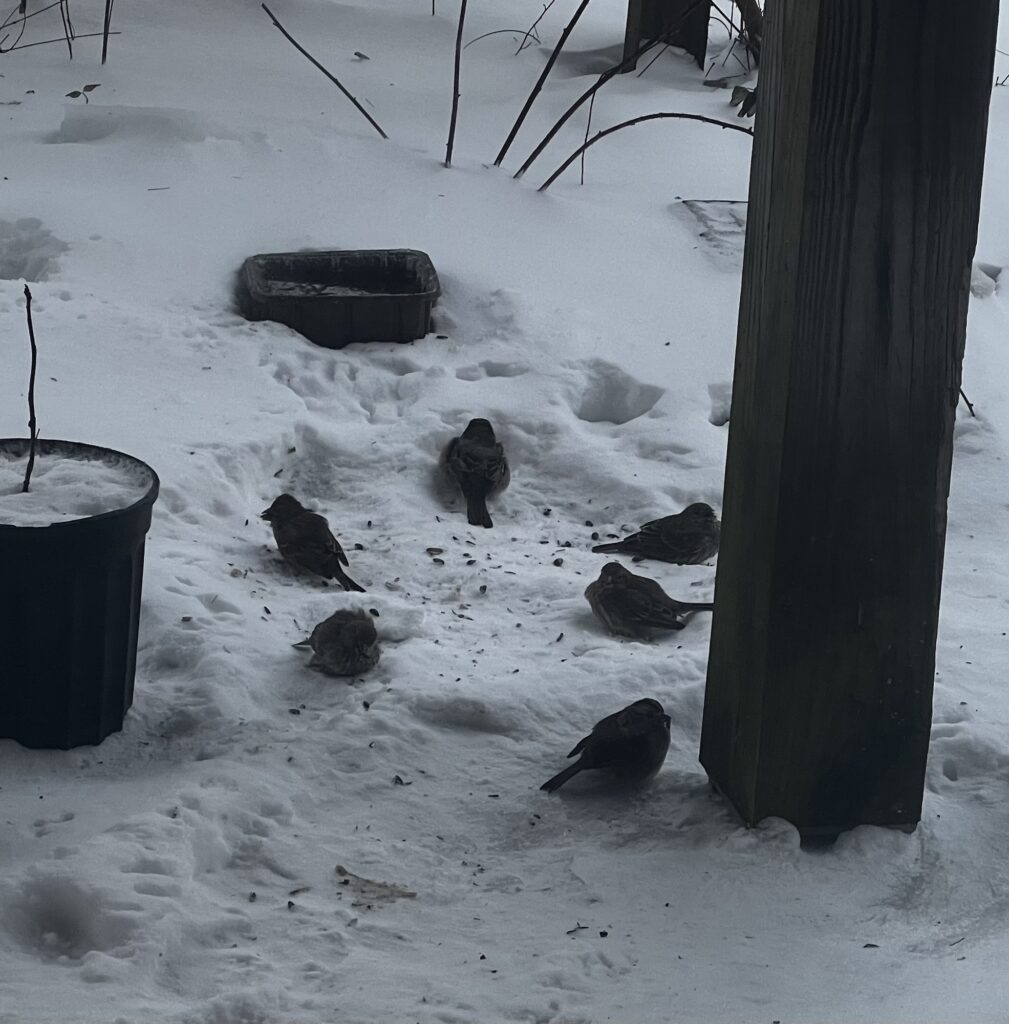
Notably, the bird die-off was primarily restricted to two breeds: House Sparrows, comprising the vast majority of the dead birds (10) and House Finches (just 2). These birds are both considered invasive breeds here, and they apparently compete in areas where they both live. The various kinds of woodpeckers, the Blue Jays, nuthatches, other types of sparrows, etc., either survived the brutal cold or they died in places where we wouldn’t see them. I fervently hope it’s the former scenario, and that they have all returned to the feeders during this now-unseasonably warm period.
Farming like we do in a Minnesota-level cold snap (and we know of what we write) is very challenging, mentally and physically, and downright dangerous. If we knew we’d be encountering cold on this level every winter, we would definitely have to change the way we operate; regardless, we will need to be prepared, just in case, for something like this to happen each year. The experience of this kind of cold, here, made me wonder if we’re not a bit nutty to be trying to do what we do.
The bitter cold has made a lasting impression on me. I’ll be watching the weather forecasts now like a hawk, constantly trying to stay a few steps ahead of what might be a repeat. I sincerely hope it never happens again, but climate change has made what was arguably predictable (seasons, for example), unpredictable. Just a week ago, it was -32F here; today, it’s a balmy 63F. While the animals are enjoying the break from the cold, I can’t shake the feeling of wrongness that accompanies this swing of the pendulum: how do living creatures acclimate to the temperatures when they swing up and down so dramatically, seemingly on a whim? I have to conclude that they don’t.
Here’s hoping that you have all weathered the cold (or heat, if you’re in the southern hemisphere) and that 2023 rings a new year that brings more predictable temperatures (I can wish, right?). I will not forget 2022 and the hellish nature of the holiday cold snap. Begone!
